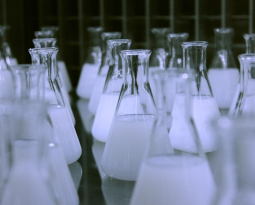New Hampshire Patent of the Month – July 2022
In a traditional casting system, molten alloys are poured or injected into a mold from the top into a sprue passage. Directional solidification is then used to minimize defects or shrinkage as the alloy sets. Finally, any solidified alloy remaining in the sprue needs to be removed. When the alloys are high cost materials, the wasted product remaining in the sprue can be very expensive. Some attempts at counter-gravity processes have been designed to limit this by filling the sprue from the bottom. Then any excess alloy is drained and recaptured. Unfortunately, these counter-gravity methods have all relied on large equipment – extending up to 40 feet or more.
Metal Casting Technology, Inc. set out to redesign these systems to use smaller and more convenient equipment. This R&D effort has led to a patent for their novel counter0 gravity mold filling methodology.
Their system holds the mold stationary while a crucible moves laterally from a melt chamber to a fill chamber below the mold. The casting chamber is positioned just above this fill chamber. By keeping these chambers separate, the pressure in each can be controlled and varied relative to each other. It’s this pressure differential that causes the molten metal to fill the mold.
The crucible carries melted metal alloys from the melt chamber to the fill chamber by pouring through a fill pipe. The fill chamber has a higher relative pressure than the casting chamber, causing the molten metal to move upwards through this fill pipe into the mold. Once the mold is filled and a certain portion is solidified, the pressure differential is reduced, allowing any molten metal still in the sprue to drain back into the crucible.
By converting from a largely vertical set up seen in other counter-gravity designs, this set up saves space and reduces the equipment needed. For instance, this design does not need a pour cup and the feeder length is much shorter. The excess material is still saved, and the process is simplified.
Are you developing new technology for an existing application? Did you know your development work could be eligible for the R&D Tax Credit and you can receive up to 14% back on your expenses? Even if your development isn’t successful your work may still qualify for R&D credits (i.e. you don’t need to have a patent to qualify). To find out more, please contact a Swanson Reed R&D Specialist today or check out our free online eligibility test.
Who We Are:
Swanson Reed is one of the U.S.’ largest Specialist R&D tax advisory firms. We manage all facets of the R&D tax credit program, from claim preparation and audit compliance to claim disputes.
Swanson Reed regularly hosts free webinars and provides free IRS CE and CPE credits for CPAs. For more information please visit us at www.swansonreed.com/webinars or contact your usual Swanson Reed representative.

















